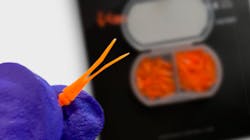How the humble dental wedge can improve your dentistry
As humans, we tend to stick with what we know because it’s familiar, and familiarity brings comfort. This is fine, but it’s also limiting and can keep people from a host of possibilities, such as doing things faster, better, and more easily.
The same instruments, techniques, and procedures I learned in dental school are what I still use in my private practice every day. The instruments may not be the exact brands, but a handpiece is a handpiece, a curing light is a curing light, and a dental wedge is a dental wedge. Right? Fundamentally, yes. But the thing is, innovation never sleeps. So, while the basic mechanics responsible for how things work remain the same, the way they’re designed to work tends to change and improve over time.
For instance, while a curing light manufactured 10 years ago is certainly usable in today’s operatory, a new model will provide significant improvement in terms of size, shape, ergonomics, speed, and efficiency. Similarly, handpieces built 20 years ago required significant maintenance, were bulkier, heavier, and generated more noise than contemporary models.
The simple wedge
Can the same be said about dental wedges—one of the most important, yet often overlooked elements of Class II composite restorations? Yes! Even “simple” products can be improved to provide benefits their predecessors promised yet didn’t quite deliver.
Why try a new matrix wedge with a proprietary split-wedge design when the ones you’ve been using for years work fine? Because you’ll be surprised and impressed at the improvement in your Class II composites that a split-wedge can provide. This simple yet effective device tackles Class II procedural inefficiencies such as gingival seal issues, matrix contour issues, and proximal contact issues. We all know a better gingival margin results in less flash, thereby achieving better results with less time needed for finishing and polishing.
Unlike big ticket dental instruments and technologies that can be a burden to your practice’s bottom line for years, especially if you don’t use them as often as you anticipated, buying a new dental wedge kit certainly won’t break the bank. In fact, the time savings alone will pay for it after just a few cases. Also, there’s practically a zero learning curve. If you’ve used a conventional wedge, you already know how to use one with a split-wedge design. The difference in your Class II outcomes will be remarkable. It’s amazing how something as seemingly inconsequential as a wedge can make such a significant difference.
About the Author
Matthew Burton, DDS
Founder of Burton Dental Innovations LLC, Matthew Burton, DDS, developed the BurtonBands and VursaWedge matrix system to help dentists achieve more predictable and favorable Class II composite results with improved efficiency and optimal outcomes. Dr. Burton specializes in Class II composite restorations at his private practice in Frankfort, Illinois, and he’s leveraged his insights to develop and market new solutions for dentists who face the same challenges in their own practices.
